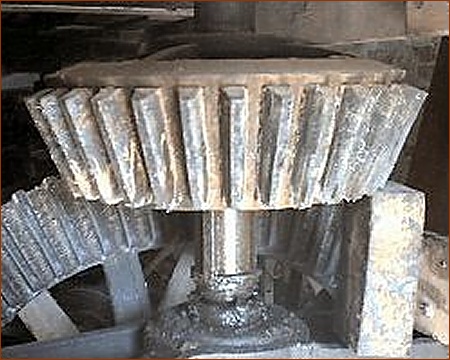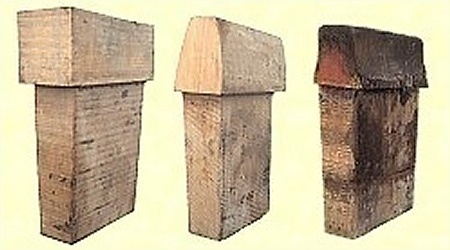 |
|||
 |
Gear Wheel with Wooden Teeth | ||
 |
Many visitors to the Mill are surprised to learn that some of the gears transferring the power from the waterwheel to the millstones are fitted with wooden teeth. Millers found that using wooden and metal toothed gears together produced less noise when the mill operated and reduced the wear on the metal toothed gears. It also acted as an additional safety factor as the wooden teeth will break under excessive force. The teeth, or cogs, were usually made from apple, cherry or hornbeam wood, cut to shape before being inserted into the cast iron gear wheel frame. If a tooth became worn or broken, it could be removed and replaced by a new one. The top picture shows the stone nut, the last gear driving the millstones, fitted with wooden teeth. The stone nut is keyed onto the stone spindle but is able to move up and down. In the picture, a block of wood is shown holding the stone nut up and out of gear, away from the driving bevel gear. This prevents the stone spindle and the runner millstone from rotating. The lower picture shows three wooden teeth: a rough cut blank tooth as sawn from a block of wood, a shaped but unused tooth ready for inserting into a gear wheel, and a well-worn tooth removed from a gear wheel.
|
||
 |
|||